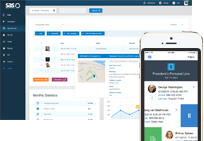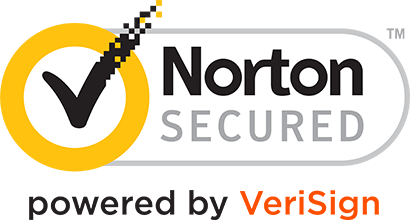- Log In
- Support
- Company
- Contact Us
- Live answers @ 1-888-532-4794
5 Essential On-Call Best Practices
Having a bullet-proof on-call scheduling system is a crucial part of many service industry businesses with 24/7 availability. For example, medical practices need to be available around the clock for urgent health issues, HVAC and plumbing companies need to be available in the event of plumbing or heating emergencies, towing companies need to be available for roadside emergencies, and the list goes on.
Since most companies can’t afford to staff 24/7, businesses who operate outside of traditional office hours need a reliable on-call scheduling system to engage employees after hours. If you’re not staffing around the clock, on-call management is something that’s handled amazingly well by answering services. If you’re already using an answering service for your on-call dispatch, congratulations! Check out our 5 tips below to take steps toward an error free on-call management system.
#1. Keep Your Schedule Updated in Advance
Whether you’re working with an answering service or not, keeping your on-call schedule updated in advance is a must. Not only does it allow your staff to plan their evenings, it also eliminates the stress of scrambling for coverage at the last minute. Having your on-call schedule updated in advance ensures that the right person is always being contacted.
If your schedule is not current, your answering service may contact the wrong person, or maybe even no one at all, which could be a disaster. Other disaster scenarios include:
- Your employee telling the service they have the wrong employee and hanging up
- Having the wrong employee handling the request when it’s someone else’s responsibility
- The employee ignoring the call because they aren’t scheduled
- Customers being upset
- Inflated answering service invoices due to the agent scrambling to pass the message to someone
If possible, see if your answering service can set up alerts letting you know if your on-call is out of date or expiring soon. Often times, companies will update their on-call schedules internally and forget to notify their service of the changes.
Pro tip: See if your answering service allows you to update your on-call schedule for a few months in advance so you don’t have to worry about it each month!
#2. Keep Your Contacts Updated
In addition to keeping your on-call schedule updated, you’ll want to make sure your employee contact information is up to date, too. For example, if someone leaves your company, or if people are new to the schedule, the service needs to be notified. In addition, while your staff members may stay the same, their phone numbers or emails may change, so you’ll want your answering service to stay up to date with that information as well. There’s nothing worse than for an answering service agent to reach the on-call just to have them say ‘I haven’t worked there in months.’
Pro tip: Doing monthly check ins with your answering service is a great way to make sure everything’s running smoothly and is also a great opportunity to make updates if necessary!
#3. Switch Your Protocol At Night
While some businesses just use an answering service after hours, many businesses forward their calls throughout the day as well. For example, HVAC companies may use an answering service during the day in a roll-over capacity for calls they can’t get to. Typically, customers are alerted about these ‘office hour’ messages via text or email.
However, if your answering service is simply being a receptionist and texting or emailing messages during the day, it’s a good idea to have a true on-call protocol in place at night. After hours, instead of texting and/or emailing, you’ll want your service calling your employees. 100% of studies show it’s much harder to sleep through a phone call than an email. The quicker your staff members can respond to an emergency, the better your business looks, and the happier your customers will be.
#4. Make Sure You Have Back Up
If your on-call staff doesn’t pick up the phone, make sure you have a back up protocol in place. For example, if your answering service is instructed to call Linda one time, but she doesn’t answer, should they just leave a message and call it quits or should they try calling her again? If she doesn’t answer again should they move on to a secondary person?
For companies where receiving urgent messages after hours is crucial, back up plans are a must. We recommend having at least 1 backup in place for every on-call schedule so there are a minimum of 2 employees on-call any evening.
You should also have a backup employee that knows how to navigate the answering services oncall system. If you need to make an urgent change to your schedule and the office guru who knows how to work the system isn’t there, you’ll want someone else who will know how to make a quick change. Give other employees access to the on-call system and train them how to work the software so you won’t be up the creek in a pinch.
#5. Keep Your Staff in the Loop
Your staff should be familiar with how your answering service works, how calls are made, which number the on-call calls come from, etc.
- Know the number texts from the answering service originate from
- Make sure the answering service originating email address is set up as a safe sender
- Make sure your employees know the phone number the service will be calling from on transfers or any on-call dispatches
In addition, if you’re using an answering service for on-call dispatch, make sure your staff knows how the service works. If they happen to miss a call, can they call the service back and retrieve the message over the phone or is there an online portal that they can access to see the messages? Can they text the service to stop a reach out? Do they need to call the service to stop the reach?
- If your service has an app, make sure everyone has it so they can access messages
- Share the forwarding number with your employees so they can call in to the service if they miss a call
Categories
- Advice (32)
- Answering Service 101 (18)
- Best Practices (10)
- Call Center Jobs (6)
- Call Center Software (20)
- Comparison (2)
- Customer Service (30)
- Funny (31)
- Holidays (19)
- Industry Hacks (19)
- Infographics (53)
- International (1)
- Medical (8)
- News (12)
- Phone Etiquette (2)
- Phones (14)
- Pricing (8)
- Quizzes (3)
- Receptionist (11)
- SAS Products (29)
- Scripting (4)
- Services (5)
- Small Business (25)
- Starting Up (7)
- Tips and Tricks (19)
- Uncategorized (1)
- Videos (19)
- Workplace (6)
Recently writen
- Call Center Script Best Practices: Advanced Script Block Tips to Optimize Your Answering Service
- January 2025 Release Notes – Adjustments to Call Details Timeline, New Scripting Updates, Live Transcription, and more!
- April 2024 Release Notes – Voicemail Greetings, Ability to Access Websites With a Username and Password, and more!
- March 2024 Release Notes – New Add-On, Settings Revamp, and more!
Follow Us
How about a demo?
We'll show you how our web portal works and answer any questions you have about SAS.
Schedule a demo







